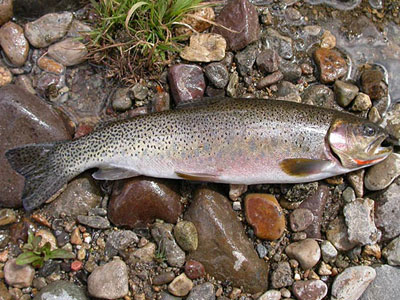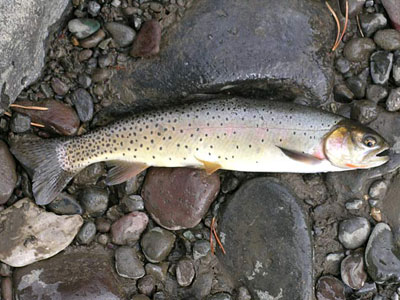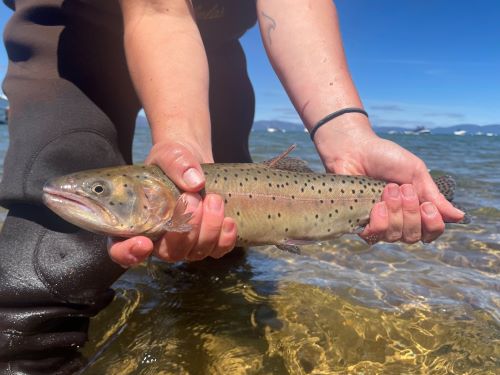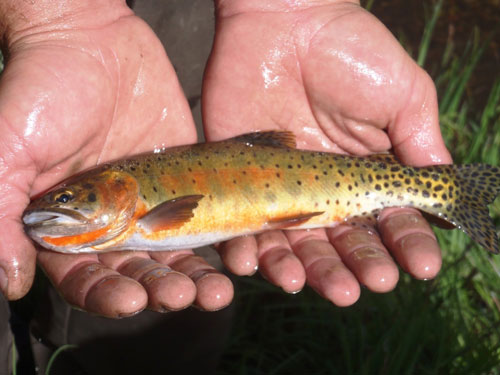Westslope Cutthroat Trout | Credit: National Park Service
Cutthroat trout are native to western North America. The common name “cutthroat” refers to the distinctive coloration on the underside of the lower jaw. They are among the most diverse trout species, with the broadest historical range of North American stream welling trout.
Cutthroat trout are found in fresh, brackish or saltwater in North America mostly west of the Rocky Mountains. Some populations inhabit small streams all their lives, while others live in large rivers and spawn in small streams or dwell in lakes and spawn in streams.
Depending on subspecies and habitat, the coloration of cutthroat trout can be golden, gray or greenish on the back. All populations have distinctive red, pink, or orange marks on the underside of the lower jaw, which helps in identification.
Cutthroat trout have a short, conical head with a somewhat rounded snout. They have a large mouth with well developed teeth on both jaws. Anadromous males develop a slight hooking of the mouth and elongated lower jaw during the breeding season.
Yellowstone Cutthroat Trout | Credit: National Park Service
A few coastal populations are anadromous, living primarily in the Pacific Ocean as adults and returning to fresh water to spawn.
The ranges of the coastal and Yellowstone varieties are separated by a central area, which is occupied by rainbow trout. Inland forms of cutthroat trout also exist in western Alberta Canada, in headwaters of rivers.
Native to the Tahoe Basin, Lahontan cutthroat trout are the largest cutthroat trout species in the world. Lahontan cutthroat trout are listed as a threatened species under the federal Endangered Species Act.
Native Lahontan cutthroat trout disappeared from Lake Tahoe due to overfishing, damage to spawning tributaries caused by pollution, logging, water diversions, and the introduction of nonnative species.
Federal and state efforts are underway throughout the fish’s native range in California and Nevada to restore the species and its habitat.
The Rio Grande cutthroat trout lives in mostly remote, mountainous streams in New Mexico and southern Colorado. One of more colorful subspecies, Rio Grande cutthroats have red, orange, and yellow sides, peppered with dark spots. The Rio Grande cutthroat trout has been New Mexico’s state fish since 1955.
The coastal cutthroat trout is colored dark to olive-green with numerous black spots and may appear more blue with silvery sides. The interior cutthroat trout has a pattern of yellow-green with red on the sides of the head and front of the body and the belly.
Size can vary widely among different populations and subspecies of cutthroat, with adults ranging from 6-40 inches in length, and weights ranging from less than 1 to over 15 pounds.



